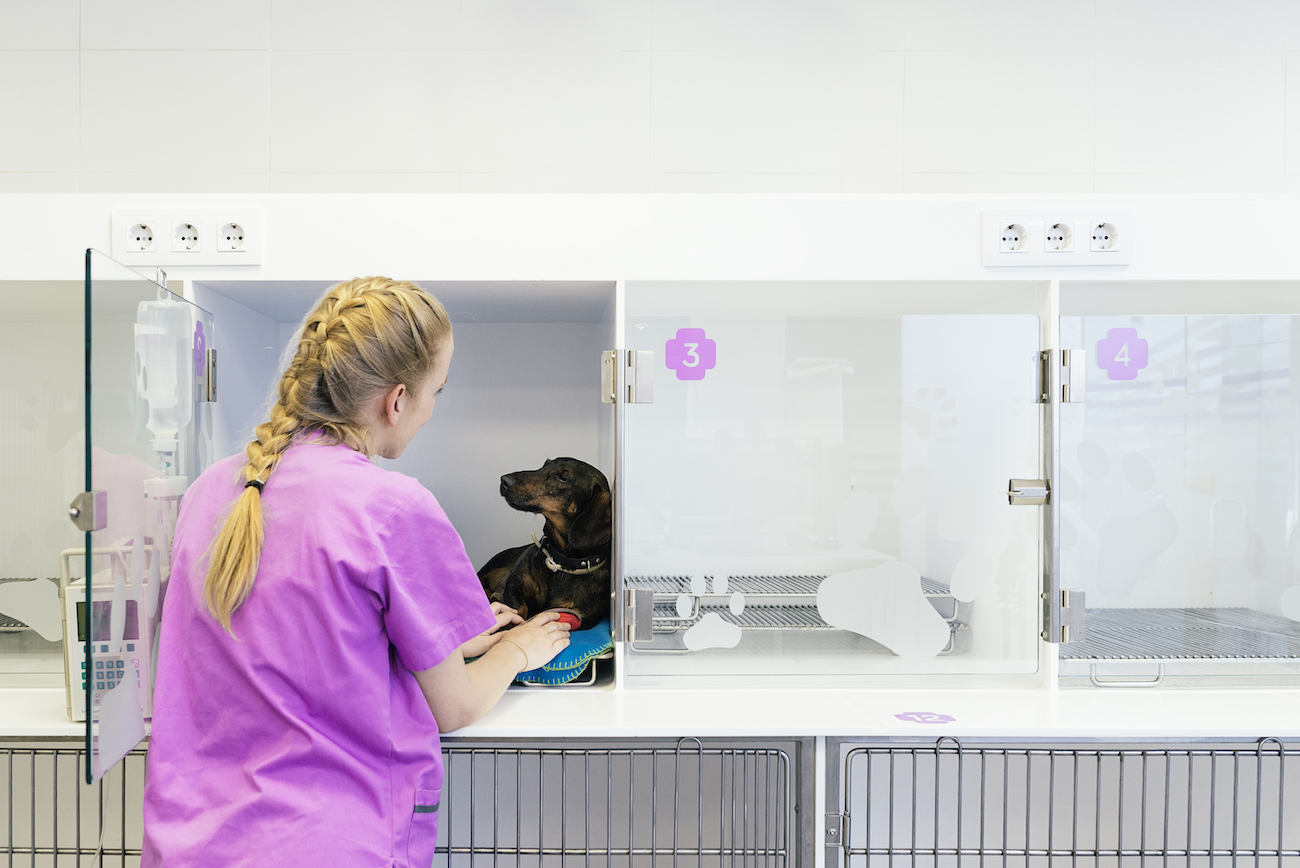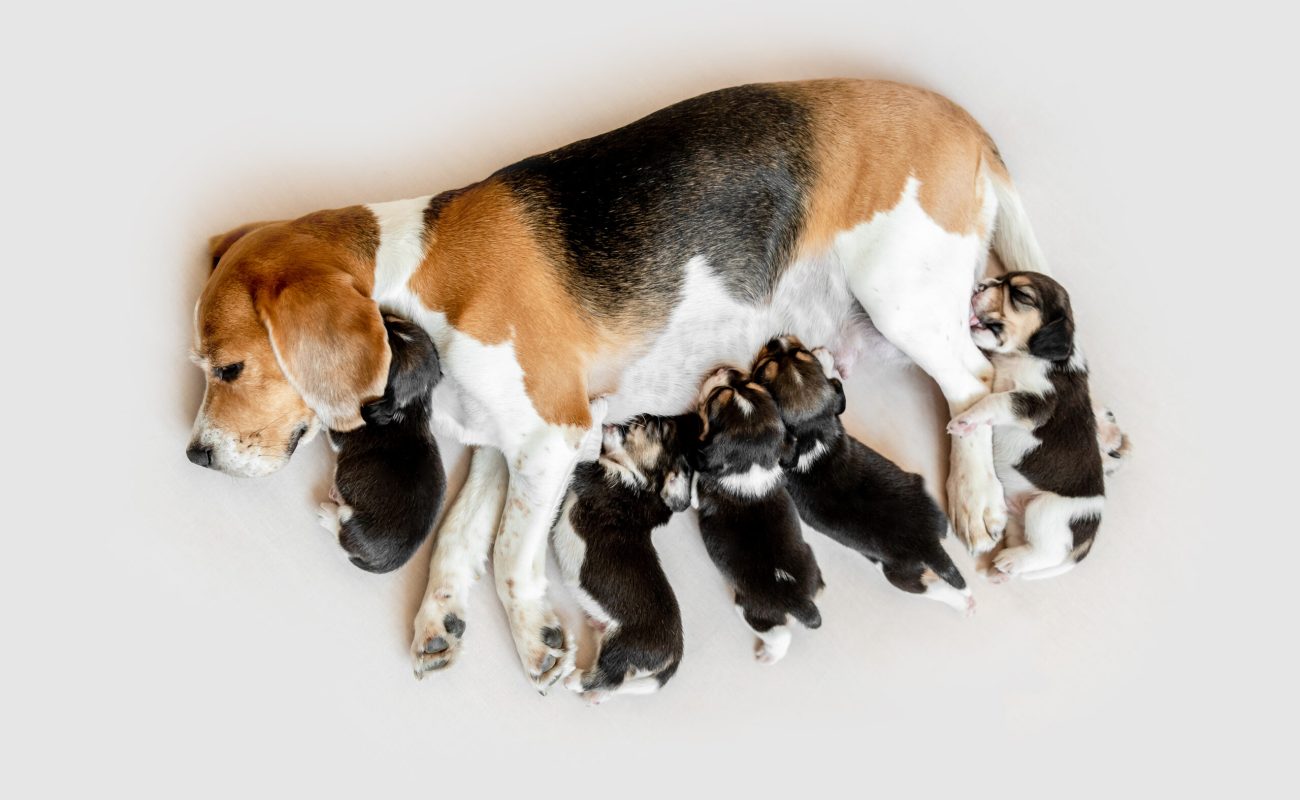
Panel Discussion: DNA/ Genetic Health
Genetic Testing is the rage! It’s on everyone’s lips right now! Wait! As with all things new and exciting, there might be information out there that’s not 100% accurate.
Whelping has always been an interesting and challenging subject for me. So much can go wrong, but when you have the experience and tools needed to help it go as smoothly as possible, it can be such a pleasant and exciting time. A bad whelping experience leaves a breeder with a bad feeling in the pit of his or her stomach for days, while a nice, problem free whelping experience can leave us feeling elated and rewarded.
Read along as we tap into the expertise of five dog breeders, in a variety of settings, with an amazing variety of advice and knowledge. Not every dog breeder agrees on all of the details, but as you know, there can be more than one way to something successfully. The goal for this Panel Discussion is to give advice and ideas, and then you, the breeder, can figure out how to implement what’s beneficial into your whelping program.
Oh, and don’t forget, this is only half of the questions! There’s more coming next time!
Lisa Miller is the breeder behind Lisa’s German Shepherds, located in Pennsylvania. They breed top quality German Shepherds that are healthy, structurally sound, have a great temperament, and a good working drive. Their dogs come from top working dog lines and champion show lines. Lisa strives to produce puppies that make wonderful companions and are smart, loyal, and have good structure.
Rueben Yoder, with Rustic Barn Kennels, along with his wife Rachel and daughter Kari Lanae, have enjoyed the challenge of raising high quality Pembroke Welsh Corgis since 2018. Despite the constant challenge of finding show quality breeding stock, they have arrived at a better place than they originally thought possible, and their newest additions have multiple AKC Champions and Grand Champions in their close pedigree. They are always happy to chat about ways to improve the breed, and have made it their goal to provide fellow breeders with stock that will triumph in the show ring.
Marty Greer is a 1981 graduate of Iowa State University and a 2010 graduate of Marquette Law School. She established the Brownsville Small Animal Clinic in 1982 and specializes in Pediatrics and Reproduction. In 2002, she opened a Canine Semen Freezing Center, International Canine Semen Bank, Wisconsin (ICSB-WI/IL), and became Penn-Hip certified. Dr. Greer raises and shows Pembroke Welsh Corgis and Danish Swedish Farmdogs, and her family has raised five puppies for Canine Companions for Independence, a service dog organization.
Claudia Holt, along with husband Chuck, with Judy’s Cavaliers, has an interesting story about their reasons for breeding King Charles Cavaliers. It all began in 2003 when they found themselves at their wits’ end, searching for a solution to help their special needs daughter, Judy Grace, sleep soundly in her own bed. Their first Cavalier, Benny, proved to be just the companion that Judy needed, and since then, the Holts made the decision to start breeding these wonderful dogs so that other families could experience the same love and comfort they have brought into their lives.
Elson Bontrager, and his wife, Leah, are the owners and caretakers of Premier Bulldogs, which was established in 2011. They offer top-quality English Bulldog puppies for sale, and offer delivery in some cases. All of their puppies are AKC registered, home-raised, and 100% healthy. Their kennel is kept immaculately clean and is staffed by full-time kennel helpers who are highly trained, experienced, and dedicated.

How much experience have you had in whelping litters of puppies?
LM: I have been breeding and showing German Shepherds and English Setters for many years.
RY: We have been breeding Corgis since 2019, so I’ve assisted in many litters. I am still learning a lot though! During a recent complicated delivery, I discovered a way to place a finger at the base of the skull and another behind the jaw, and by applying firm pressure, I was able to assist in delivering a monstrous male puppy. Of course, this only works when they’re moving down the birthing canal head first.
MG: I have been raising my own litters for 36 years. I have been in veterinary practice over 40 years, assisting breeding clients with their whelping, generally on an emergency basis.
CH: I feel like I’m just starting and learning to help mama dogs bring their puppies into the world. I’ve experienced 4 litters with our 2 dogs. I’ve loved every minute of it!
EB: I started breeding dogs in 2011. I started with Golden Doodles, Poodles and Cavaliers, but have since shifted to everything Bulldogs and Frenchies.
Do you take the old-fashioned approach to whelping, where the female gets left alone, or are you constantly there with her during whelping?
LM: I do not believe in letting my females alone to have their puppies. There is no reason to risk losing any puppies or the female. If I can’t be there, I always make sure to have an experienced person with them.
RY: The answer to this question varies greatly, because of the varying temperaments in our dogs. Some females refuse to have puppies while I’m around, but will have added 2 or 3 to their number of puppies when I return, only 30 minutes later! Others will be sitting in their whelping box with a most imploring look, as if to say, “Can’t you please help me?”As a general rule, though, if I feel confident that the female is well capable on her own, I will check in every 1 to 2 hours, just to make sure everything is okay, and to administer 2 ml of Breeder’s Edge calcium paste.
On a side note, here at Rustic Barn Kennels, we will very likely retire females that require a high level of assistance during whelping. We do this in an effort to develop a strong breeding program where the dams can whelp independently. Capable females with stable temperaments have a far-reaching effect on the quality of puppies a kennel will produce.
MG: I believe in being present for the whelping. That may not always mean intervention, as that depends on the female. Some can manage well on their own. Especially maiden females can run into difficulty, not knowing how to react quickly enough to remove the sac from the newborn, causing them to be lost. I am a huge proponent of administering calcium gel during whelping to help with maternal skills and uterine contractions.
CH: I have stayed and helped throughout the whole process with my girls. I also stay with them for the first night afterwards.
EB: When she starts whelping, I like to be with her to make sure everything starts like it should. After that, I let her have privacy, but check on her every 15 to 30 minutes. I like to give her a little dose of oral calcium between every or every other puppy. It’s like oxytocin, but more in an organic way.
What is your feeding and nutrition program leading up to whelping, and in the weeks that follow?
LM: All my dogs eat a balanced, high protein diet. (Inukshuk) I feel like this is the best food available on the market that fits into my program, having show dogs, sport dogs, and a breeding program.
RY: We use a dog food that we can conveniently source locally, made by Nutrena. Loyal Life All Life Stages. With this food, we have beautiful hair coats, large litters, and overall good health, but there are many good pet foods available.
We also are firm believers in Breeder’s Edge products prior to breeding, during pregnancy, and after whelping. For a few days after whelping, we will mix cottage cheese with their regular food if needed. This is just to whet their appetites and to increase their milk production.
MG: From the 4th week of pregnancy, I increase the female’s food offered by 10% a week. I recommend either Royal Canin or Purina Sport 30/20 food for females before, during, and after pregnancy. They need this level of micronutrients, the vitamins, minerals, and amino acids found in these two brands of food. I believe there is a strong correlation between nutrition and success in fertility, male and female.
CH: We have our dogs on PawTree food all the time. We give the Chicken and Sweet potato kibble and also include the PawTree Freeze Dried Raw Food. My girls like the beef flavor the best. I also include PawTree Gastro Pro Plus sprinkled into their food every day. We top that off with PawTree Salmon Oil. They love that!
EB: The moms are usually on adult dry food until they are 4 to 6 weeks close to whelping. At that point they are switched to PawTree, which is an all-natural dog food with no byproduct, soy, or additives. They stay on this food all through whelping and until the puppies are weaned at 6 to 6 1/2 weeks old. After that, the female is taken back into her original room, and switched back to the original dry food.

What is your favorite whelping box or system?
LM: The EZS Whelper, which I believe is the safest box on the market!
RY: I’ll admit, when it comes to what is a good whelping system, I’m not all that knowledgeable. Any system using hot water heat will work well. Our favorite is the system we have, which is in-floor, hot water heat. Maybe that’s my favorite system because it’s the only system we’ve ever had. We also supplement heat, using heat mats in an effort to keep the puppies’ surface temperature at 90 degrees for the first few weeks.
MG: I will only use a heat source from underneath, a heated disc with a rheostat to allow for temperature adjustments. I use this in a custombuilt whelping box with washable surface, along with whelping pads for absorbency and traction for the pups. I have seen too many risks by heating with a heat lamp. For sick pups, I strongly recommend the PuppyWarmer incubator system.
CH: We have tried a few whelping systems. First, we used a pool with collapsible hard sides that our girls could jump in and out of easily. It was a good starting system. We also have the EZ Whelping box with an added room connection, and I really like this system. When the puppies get a little older, they can jump over the sides. We just ordered the Senneny Whelping Box. This one has the added room, and that is great as the puppies get bigger. This system also has 24-inch sides, which I think that will make a positive difference as the puppies grow.
EB: I like to use a box with four inch tall sides and a 6 inch overhang so the puppies can get underneath, away from the mom, so she doesn’t lay on them.
During whelping, what are some obvious signs that you watch for that signal distress, signs that tell you that this birthing dog needs to see the vet immediately?
LM: The biggest thing I personally watch for is if the female has bloody/green discharge before any puppies have been born. If this happens, I will contact my vet. If she has gone into active labor and has no puppies within half an hour, I contact my vet. If there is any straining not resulting in puppies, I don’t wait too long to call the vet. It’s always safer to call then to have trouble.
RY: During a lengthy labor, the first sign that concerns me is signs of wearing out, the female no longer able to push very hard during contractions, etc. Listlessness is a danger signal, and at that point I will go for the Pet ER if the other vets are not open. During the night this could be the only option. Panel Discussion
MG: #1. Green vaginal discharge prior to the birth of the first pup. #2. Excessive blood/bleeding. #3. Frantic behavior of the female. #4. Pushing more than 2 hours on the 1st pup or more than 1 hour on subsequent births. #5. Over 2 hours between births.
CH: Our girls have wanted to be near me when they are starting labor. They like a good rub down in between pacing. They pant as they get closer to delivering. As labor progresses, monitor their contractions until they give birth. I learned a good trick from a seasoned dog breeder that has come in handy in between puppies. She told me to give them a spoon of ice cream with some protein powder mixed into it. This helped them have strength for birthing the next pup. It gives them energy in about 10 minutes, plus they think it’s yummy! It has really helped my smaller female after a few puppies. It definitely gave her the push she needed to push out her puppy!!
EB: Some of the most concerning signs I watch for is the color of the milk, which can indicate complications. If that is the case, I give her more calcium, which helps to push out any milk that is not suitable for the pups. The second thing I watch for is restlessness and irregular or heavy breathing. This is one of the reasons why I sit in with her several times a day to make sure that she is comfortable and she understands what is going on.

Genetic Testing is the rage! It’s on everyone’s lips right now! Wait! As with all things new and exciting, there might be information out there that’s not 100% accurate.

Step into the world of American Bloodhounds, where their saggy ears and incredible sense of smell tell a fascinating story.
From ancient European places to the United States, follow these special dogs on their journey. Learn how to take care of their unique features, like those floppy ears and shiny coats.
Discover their bravery in finding lost people, with exciting stories of Bloodhounds being heroes. Join us on a sniffing adventure where every smell shares a tale, and each trail leads to the heart of the American Bloodhound story.

In issue 6 of TDJ, you probably saw the great article in the Customer Care, about how important it is send enough with your puppies to their new homes that the new owner feels prepared, all while not overwhelming them with useless products.